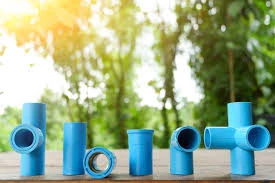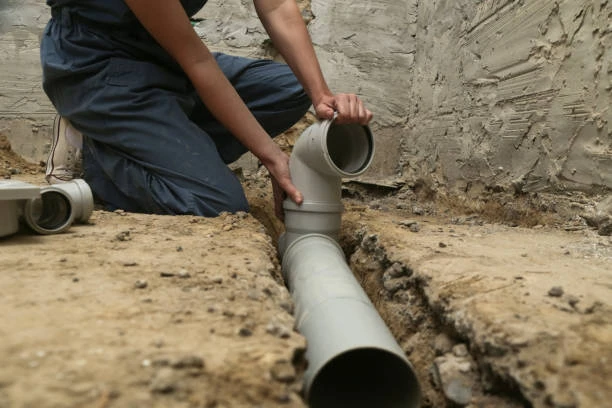When it comes to modern construction and industrial applications, PVC Pipes are indispensable. These versatile pipes are used for everything from plumbing to electrical conduits. Their production, however, involves a complex process that has been revolutionized by advanced machinery. This article delves into how high-tech machines have streamlined PVC Pipe BS 4346 production, making it more efficient and cost-effective.
The Basics of PVC Pipes
What Are PVC Pipes?
PVC pipes are made from polyvinyl chloride, a type of plastic. They are known for their durability, resistance to chemicals, and affordability. These properties make them suitable for a wide range of applications, including water supply, sewage systems, and electrical insulation.
Common Applications
PVC pipes are commonly used in:
- Residential Plumbing: For water and drainage systems.
- Agricultural Irrigation: To transport water efficiently.
- Construction: As conduits for electrical wiring and ventilation systems.
The PVC Pipe Production Process
Raw Materials Preparation
The production process begins with preparing the raw materials. This mixture is crucial for ensuring that the final product meets industry standards.
Extrusion Process
The prepared PVC mixture is fed into an extruder, a high-tech machine that heats and melts the material. This stage is critical as it determines the pipe’s dimensions and consistency.
Cooling and Cutting
Once the pipe exits the die, it passes through a cooling tank where it is rapidly cooled to solidify. This ensures uniformity and accuracy in the final product.
Quality Control
Quality control is an essential part of the production process.
High-Tech Machines in PVC Pipe Production
Extruders
Extruders are pivotal in the PVC pipe BS 4346 manufacturing process. Modern extruders are equipped with advanced temperature controls and high-speed capabilities, allowing for precise and efficient production.
Die Heads
Die heads are used to shape the molten PVC into pipes. They come with various designs to produce different pipe profiles. Innovations in die head technology have improved the consistency and quality of PVC pipes.
Cooling Tanks
Cooling tanks have evolved to enhance the cooling process. High-tech tanks use controlled environments to ensure that the pipes cool evenly, reducing the risk of warping or defects.
Cutting Machines
Precision cutting machines ensure that PVC pipes BS 4346 are cut to exact lengths.
Inspection Equipment
Modern inspection equipment includes high-resolution cameras and sensors that detect even the smallest defects. This technology helps maintain high quality and reliability in PVC pipe BS 4346 production.
Advantages of Modern Machinery
Increased Efficiency
High-tech machinery has significantly increased the efficiency of PVC pipe production. Automated systems streamline processes, reduce downtime, and accelerate production rates.
Enhanced Precision
Advancements in technology have improved the precision of PVC pipe BS 4346 manufacturing. This ensures that pipes meet exact specifications, reducing the need for rework and minimizing waste.
Reduced Labor Costs
Automation has led to a reduction in labor costs. Machines handle repetitive tasks, allowing human workers to focus on more complex and value-added activities.
Improved Product Quality
Modern machinery contributes to higher product quality by minimizing human error and ensuring consistent production standards.

Innovations in PVC Pipe Machinery
Automation and Robotics
Robotic systems are increasingly used in PVC pipe BS 4346 production to perform tasks such as handling, sorting, and packaging. Automation not only improves efficiency but also enhances safety and precision.
Smart Sensors and IoT Integration
Smart sensors and Internet of Things (IoT) technology are integrat into production machines to monitor performance in real-time.
Advanced Control Systems
Advanced control systems allow for better management of the production process. These systems provide operators with real-time feedback and enable precise adjustments to maintain optimal conditions.
Environmental Considerations
Eco-Friendly Production Techniques
The PVC pipe industry is making strides in adopting eco-friendly production techniques. These include using less energy, reducing emissions, and optimizing resource use to minimize environmental impact.
Recycling PVC Waste
Recycling is an important aspect of modern PVC pipe BS 4346 production.
Case Studies
Example of a Leading PVC Pipe Manufacturer
One leading PVC pipes manufacturer has successfully integrated advanced machinery into their production line. By upgrading to state-of-the-art extruders and automation systems, they have significantly increased their production capacity and product quality.
Benefits Realized from Upgrading Machinery
The benefits realized from upgrading machinery include faster production times, lower operational costs, and improved product consistency. This has enabled manufacturers to meet growing demand and remain competitive in the market.
Challenges and Future Trends
Current Challenges in PVC Pipe Production
Despite advancements, challenges such as maintaining consistent quality, managing production costs, and addressing environmental concerns remain. Manufacturers must continuously adapt to overcome these obstacles.
Emerging Technologies on the Horizon
Future trends in PVC pipe BS 4346 production include further advancements in automation, the use of advanced materials, and continued focus on sustainability. These developments promise to enhance efficiency, reduce costs, and minimize environmental impact.
Conclusion
In conclusion, high-tech machinery has revolutionized PVC Pipe BS 4346 production, making it more efficient, precise, and cost-effective. The integration of advanced technologies, such as automation and smart sensors, has significantly improved the quality and consistency of PVC pipes BS 4346. As the industry continues to evolve, these innovations will play a crucial role in shaping the future of PVC pipes manufacturing.
FAQs
What is the primary function of a PVC pipe extruder?
A PVC pipe extruder heats and melts PVC resin, then forces it through a die to form the pipe shape. It plays a crucial role in shaping the final product.
How does automation improve PVC pipe production?
Automation increases efficiency by handling repetitive tasks, reducing manual labor, and minimizing errors. It also enhances precision and consistency in production.
What are the environmental impacts of PVC pipe production?
PVC pipe production can impact the environment through energy consumption and emissions. However, advancements in eco-friendly techniques and recycling practices are helping to mitigate these effects.
How can manufacturers ensure the quality of PVC pipes?
Manufacturers ensure quality by using advanced inspection equipment, maintaining strict quality control processes, and employing precise machinery.
What are the latest trends in PVC pipe production technology?
The latest trends include increased automation, integration of IoT and smart sensors, and a focus on sustainable and eco-friendly production methods.


















